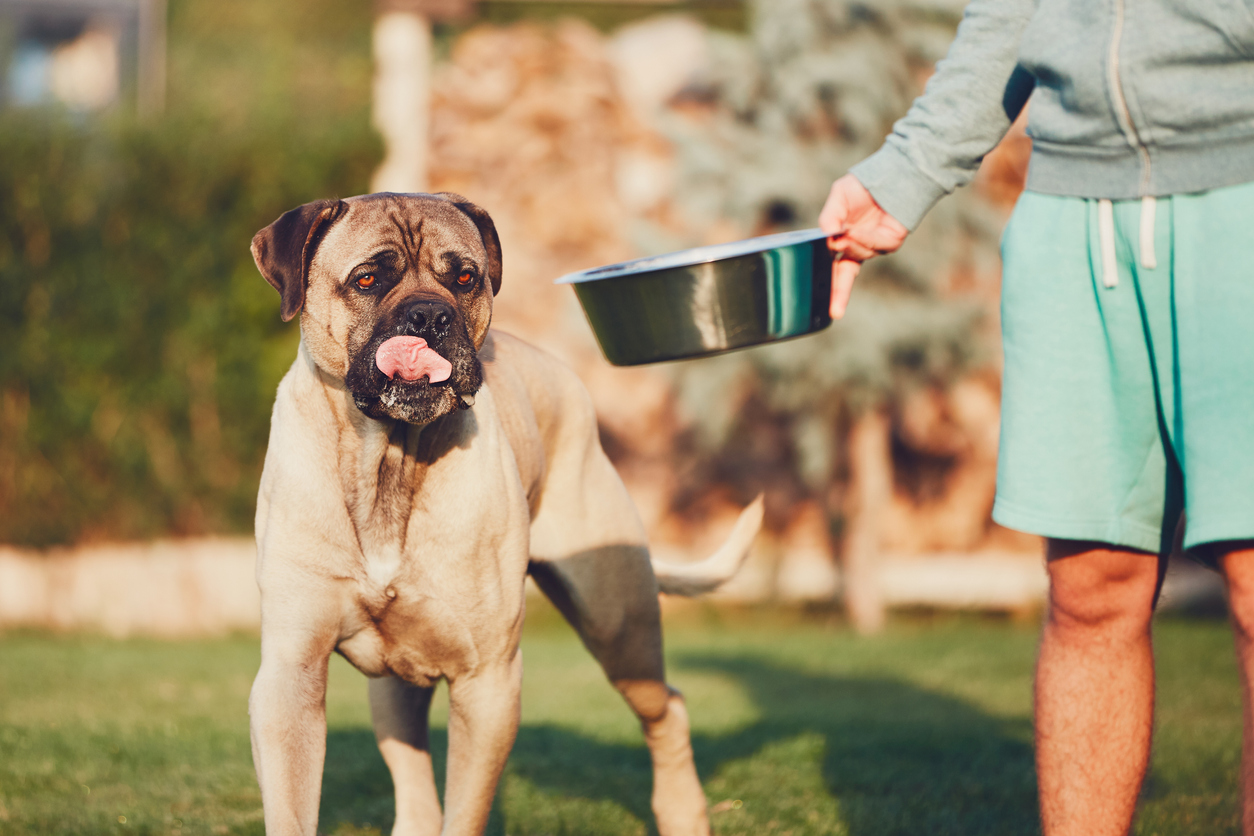Have you ever walked down a dog food aisle in a store and wondered if your furry friend can tell the difference between one type of food and the next? Different bags boast about special ingredients or reasons why your pooch will love their food, but can dogs truly taste the difference? The answer: Yes, they can!
Even though it seems like our best friends wolf down their food, they can still discern between a delicious kibble and a less appetizing substitute. However, our dog’s ability to taste their food is different than how we experience flavor.
How Do Dogs Taste Their Food?
Both dogs and humans are able to taste food the same way – through their taste buds. The key difference between us and our canine companions is that dogs taste food with a different set of taste buds than we do.
According to studies, dogs have roughly one-sixth the number of taste buds as the average human. While that may seem small in comparison, your furry friend still has around 1,700 taste receptors to pick up subtle differences in flavor. This means that our furry friends can and will prefer a kibble or wet food that tastes better to them.
What Flavors Can Dogs Taste?
While humans can distinctly taste sweet, sour, salty, bitter, and spicy foods, dogs react to these individual tastes differently than people. For example, dogs can taste sweet things, but don’t love sour or bitter sensations. Interestingly, dogs can’t really taste spicy food, but don’t be fooled, that doesn’t mean they don’t feel the heat. While they may not fully pick up on the nuanced flavor of something spicy, your furry friend will still have a painful experience if they chomp down on a jalapeño.
Salt is another notable example of what dogs taste. While people generally love a good salty snack, dogs don’t crave it in the same way. According to Psychology Today, ancient dogs never developed the same desire for salt because their largely meat-based diet was already high in sodium. As such, dogs generally stay away from salty foods and tend to gravitate to sweeter treats or other taste sensations.
Can Dogs Taste Different Types of Meat?

Yes, dogs typically can distinguish between different types of meat like fish and chicken. They do this primarily through their acute sense of smell, but taste does play a role as well.
Because of this, your four-legged friend may exhibit individual preferences for specific types of protein. For example, your dog may show a preference for the taste of chicken over beef.
If your dog is being picky at mealtime, some dry dog food recipes have specific proteins like chicken liver to address this issue. If you just want to add some variety to your best friends meal, try adding a wet food with proteins like duck or turkey.
What Else Can Dogs Taste?

Canine taste buds react to more than just the taste of food. Dogs have taste buds at the tip of their tongues that identify the taste of water. These special taste buds are even more active after your dog eats sugary or salty foods that may dehydrate them. This sensation lets them know that they should drink more water to keep them hydrated.
Your dog’s nose also plays a role in deciding what food is delicious. While dogs may not have as many taste buds as humans, their sense of smell is notably better than ours. In fact, dogs can tell if something is too salty, sweet, bitter, or sour for their tastes just by smelling it. This combination of smell and taste is part of why dogs will instinctively gravitate toward foods with meat and meat-related fats.
How to Identify Good, Tasty Dog Food, Even for Picky Eaters
Since dogs can taste their food, that also means that they can have a discerning palate. Dog food may not seem appetizing to us, but that same kibble or wet food is specially made to not only taste great to dogs, but also provide them with the nutrition they need to stay happy and healthy.
Of course, some dogs are a little more particular about what’s in their food bowl. Picky eaters are generally defined as dogs who won’t eat all their food at least once a day. This could be a sign your dog has a sensitive stomach, but it may indicate overfeeding or that your pooch just isn’t enjoying the taste of that particular dog food.
Eating is a happy occasion, which makes it important to find dog food that combines both great taste and nutrition. There are a few different ways to encourage healthy eating habits for picky pooches, and that includes making sure you feed your dog a high-quality dog food that’s made to appeal to their particular tastes.
What does it take to truly satisfy your furry friend? It starts with a lot of high-quality protein. If you haven’t noticed, dogs love the taste of meat, which is why Bil-Jac uses 23 lbs. of fresh, farm-raised chicken to make just one 27 lb. bag of Picky No More® Dog Food. We even took it to another level by adding chicken liver to ramp up the flavor for even the most persnickety dogs.
It’s important to note that ingredients aren’t the only factor that impacts the taste of dog food. Preparation also plays a big role in taste and quality. Slow cooking Bil-Jac Dry Dog Food at a lower and controlled temperature helps protect essential nutrients. This method helps your dog get more of what they need, while still loving the taste of their dog food.
Celebrate Mealtime with Delicious Dog Food
Mealtime should be a time for celebration. That’s why we take special care to provide dog food that’s made to make mealtime a happy, nutritious occasion.
Want to learn other ways to help you support your dog’s health and happiness? Join our Best Friends Club today to receive our exclusive email newsletter with helpful articles, dog care tips, and members-only discounts on Bil-Jac products.







Leave a Reply